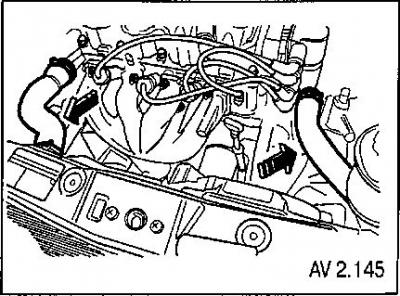Attention: before removing the cap of the expansion tank, wait until the engine has cooled down to prevent the emission of hot liquid or steam.
1. Place a container under the vehicle to drain the coolant.
2. Remove the cover of the expansion tank.
3. Open the drain cock.

Caution: Store drained fluid in a container specifically designed for coolant disposal. Never drain used coolant down the drain. Antifreeze containing ethylene glycol is an extremely toxic chemical. Draining into sewers or groundwater may cause environmental pollution.
Flushing the system
1. Place a container to drain the escaping liquid.
2. Remove dirt and sediment from the inside of the expansion tank.
3. Close the drain cock.
4. Pour clean water into the expansion tank. Fill the tank slowly so that the top hose of the tank is above the surface of the water. This will bleed air from the system.
5. Start the engine.
6. Let the engine run until the thermostat opens. A sign of an open thermostat is heating of the radiator hoses.
7. Stop the engine.
8. Drain the water.
Continue flushing the system until the drained water is clear and free of antifreeze particles and rust.
Filling system
Fill the cooling system through the expansion tank with a solution of ethylene glycol and water. The solution must contain at least 50% and not more than 60% ethylene glycol for operation in cold climates.
Note: Never use antifreeze containing more than 60% ethylene glycol and less than 40% water.
Add fluid to the expansion tank up to the MAX mark on the outer surface of the tank.

- 1. Screw for fixing the thermostat housing
- 2. Thermostat housing
- 3. O-ring
- 4. Thermostat
- 5. Coolant pump mounting screw
- 6. Coolant pump
- 7. O-ring
